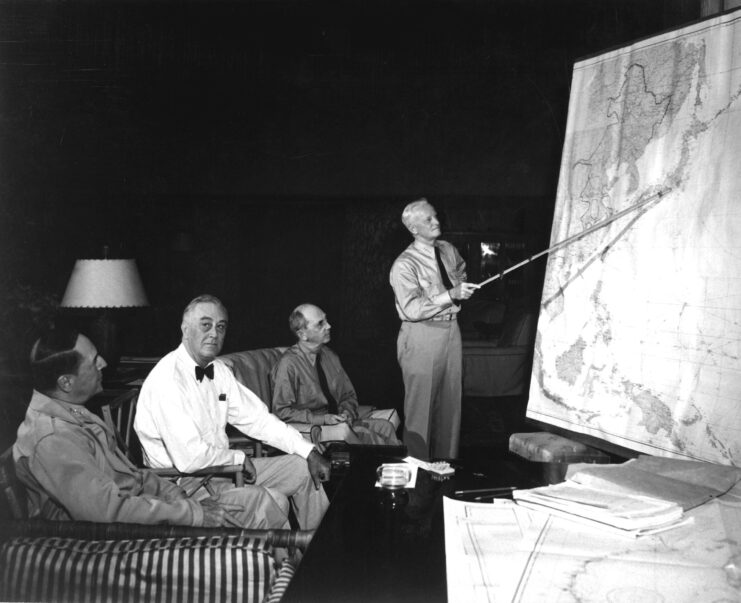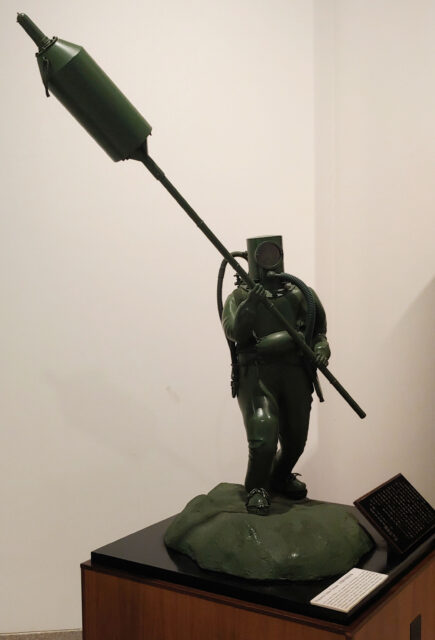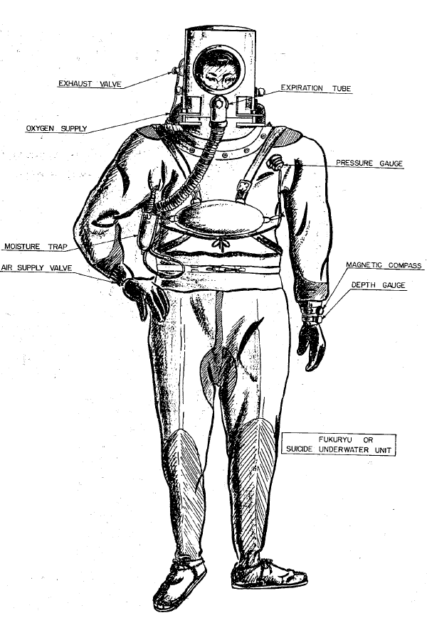During the closing stages of the Second World War, the Allied and Axis forces came up with more elaborate plans to end the intense conflict. For instance, the Americans readied Operation Downfall, an ambitious invasion of Japan. Meanwhile, the Japanese countered with unconventional defenses such as kamikaze frogmen and manned torpedoes.
Operation Downfall

Operation Downfall was the American plan to invade and conquer Japan. It was set to unfold in two phases: Operations Olympic and Coronet. If executed, it would have been a larger amphibious invasion than D-Day.
The operation was scheduled to begin in November 1945, following the end of the war in Europe. The first phase, Olympic, would begin with a massive amphibious assault on the Japanese island of Kyūshū, which would then serve as a staging ground for future troops during Coronet. This second phase, planned for around March 1946, would target Tokyo Bay with an even larger force.
However, the planned invasion was never carried out, as Japan surrendered following the atomic bombings of Hiroshima and Nagasaki. This spared both sides the catastrophic casualties that such an invasion would have entailed.
Training kamikaze frogmen

The Japanese anticipated a coming Allied invasion and devised the Fukuryu tactic to counter it. Translating to “crouching dragon,” this strategy involved kamikaze frogmen launching surprise attacks on approaching enemy vessels from underwater.
Captain Kiichi Shintani of Japan’s Yokosuka Naval Base Anti-Submarine School first proposed this concept in 1944. Concerned about manpower and supplies shortages rendering normal defenses ineffective, he adapted successful earlier tactics, notably from engagements such as Peleliu.
These operatives would conceal themselves underwater at strategic points along Japan’s coastline, executing covert explosive assaults under cover of darkness to catch enemy forces off guard. This approach not only minimized their visibility but also reduced the risk of detection and counterattack.
Fukuryu attacks

These kamikaze frogmen would emerge from their hiding places onto the seafloor in diving suits, holding 16-foot-long bamboo spears with Type-5 attack mines attached to the end of them. Each would contain an incredible 33 pounds of explosives and be rigged to explode when pushed up against the hull of a ship passing overhead.
Numerous mines would be placed around the locations of these underwater hideouts, so the frogmen could easily access them. Given the size of the explosives, the men trained for this weren’t expected to survive their mission, if successful. Not only were they on a one-way journey, but they were also signing up for endless lonely hours as they awaited the enemy’s arrival.
Training the kamikaze frogmen

Nevertheless, extensive preparations were undertaken to train 6,000 kamikaze frogmen for this role, which required a large amount of specialized equipment. Each frogman would be equipped with a diving suit, comprising a jacket, pants, shoes, and helmet, along with provisions of oxygen and liquid sustenance to endure approximately 10 hours submerged. Furthermore, they would be laden with 20 pounds of lead at depths ranging from 16 to 23 feet.
In addition to outfitting each operative, there was also the need to establish subterranean hideaways where they could patiently wait for approaching enemy vessels. The chosen solution involved constructing large concrete structures above ground, to later be submerged to their designated positions, though this plan was never executed. An alternative proposal considered underwater steel foxholes, but this concept was swiftly discarded due to its potential interference with nearby explosives.
Despite the clear meticulous planning by the Japanese to deploy their kamikaze frogmen, they ultimately stayed unused.
A failed initiative

The 71st Arashi were trained at Yokosuka, while the 81st Arashi would undergo training at Kure. Another unit was in the works at Sasebo. However, there were only two battalions fully trained by the time the Japanese surrendered, both with the 71st. The total equaled about 1,200 of the proposed 6,000 frogmen.
Training wasn’t the only thing falling behind, as production also proved difficult. Only 1,000 diving suits were ready at the time of surrender, and none of the real mines were constructed, only dummy ones.
Even though the Fukuryu were never used in combat, many still died during the training. Most of these fatalities were caused by issues with the breathing apparatuses in the diving suits. They were rudimentary, so each diver had to inhale through their nose and out through their mouth into a tank, which would turn the carbon monoxide back into oxygen.
If they mixed the two up, they’d inhale caustic lye and faint while underwater. If any seawater got into the tanks, a mixture was created that, when inhaled, would burn the lungs.
More from us: Flying ‘the Hump’ Required Allied Pilots to Fly Over the Himalayas in Terrible Conditions
Other divers died when they got tangled in plant life on the ocean floor and were unable to free themselves. Ultimately, no enemy combatants were ever killed in Fukuryu attacks, yet so many trainees were that “they couldn’t keep up with cremation.”
